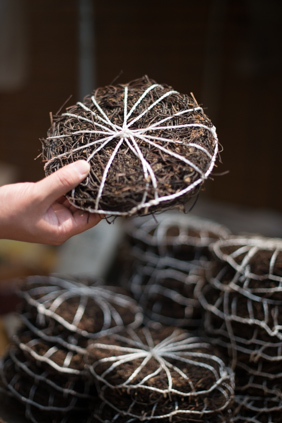Bracken
Bracken is a genus of large, coarse ferns in the family Dennstaedtiaceae. The genus is known for its wide distribution and adaptability to various environments. Bracken ferns are commonly found in temperate and subtropical regions around the world.
Description[edit | edit source]
Bracken ferns are characterized by their large, triangular fronds that can grow up to 2.5 meters in height. The fronds are divided into smaller leaflets, giving them a feathery appearance. The stems, or rhizomes, of bracken ferns are underground and can spread extensively, allowing the plant to colonize large areas.
Habitat[edit | edit source]
Bracken ferns thrive in a variety of habitats, including woodlands, grasslands, and heathlands. They are particularly common in areas that have been disturbed by human activity, such as abandoned fields and clear-cut forests. Bracken is known for its ability to grow in poor soils and can often be found in acidic, sandy, or rocky environments.
Reproduction[edit | edit source]
Bracken ferns reproduce both sexually and asexually. Sexual reproduction occurs through the production of spores, which are released from sori located on the underside of the fronds. Asexual reproduction occurs through the growth and spread of rhizomes, which can produce new fronds and establish new plants.
Ecological Impact[edit | edit source]
Bracken ferns can have significant ecological impacts on the environments they inhabit. Due to their aggressive growth and ability to form dense stands, they can outcompete native vegetation and reduce biodiversity. In some areas, bracken is considered an invasive species and efforts are made to control its spread.
Uses[edit | edit source]
Historically, bracken ferns have been used for various purposes. In some cultures, the young fronds, known as fiddleheads, are harvested and eaten as a vegetable. However, it is important to note that bracken contains compounds that can be toxic to humans and animals if consumed in large quantities. Additionally, bracken has been used in traditional medicine and as a source of thatch for roofing.
Health Concerns[edit | edit source]
Bracken ferns contain a compound called ptaquiloside, which is a known carcinogen. Long-term exposure to bracken, either through consumption or inhalation of spores, has been linked to an increased risk of certain cancers. It is advised to handle bracken with care and avoid consuming it in large amounts.
Related Pages[edit | edit source]
Categories[edit | edit source]
Search WikiMD
Ad.Tired of being Overweight? Try W8MD's physician weight loss program.
Semaglutide (Ozempic / Wegovy and Tirzepatide (Mounjaro / Zepbound) available.
Advertise on WikiMD
|
WikiMD's Wellness Encyclopedia |
| Let Food Be Thy Medicine Medicine Thy Food - Hippocrates |
Translate this page: - East Asian
中文,
日本,
한국어,
South Asian
हिन्दी,
தமிழ்,
తెలుగు,
Urdu,
ಕನ್ನಡ,
Southeast Asian
Indonesian,
Vietnamese,
Thai,
မြန်မာဘာသာ,
বাংলা
European
español,
Deutsch,
français,
Greek,
português do Brasil,
polski,
română,
русский,
Nederlands,
norsk,
svenska,
suomi,
Italian
Middle Eastern & African
عربى,
Turkish,
Persian,
Hebrew,
Afrikaans,
isiZulu,
Kiswahili,
Other
Bulgarian,
Hungarian,
Czech,
Swedish,
മലയാളം,
मराठी,
ਪੰਜਾਬੀ,
ગુજરાતી,
Portuguese,
Ukrainian
Medical Disclaimer: WikiMD is not a substitute for professional medical advice. The information on WikiMD is provided as an information resource only, may be incorrect, outdated or misleading, and is not to be used or relied on for any diagnostic or treatment purposes. Please consult your health care provider before making any healthcare decisions or for guidance about a specific medical condition. WikiMD expressly disclaims responsibility, and shall have no liability, for any damages, loss, injury, or liability whatsoever suffered as a result of your reliance on the information contained in this site. By visiting this site you agree to the foregoing terms and conditions, which may from time to time be changed or supplemented by WikiMD. If you do not agree to the foregoing terms and conditions, you should not enter or use this site. See full disclaimer.
Credits:Most images are courtesy of Wikimedia commons, and templates, categories Wikipedia, licensed under CC BY SA or similar.
Contributors: Prab R. Tumpati, MD




